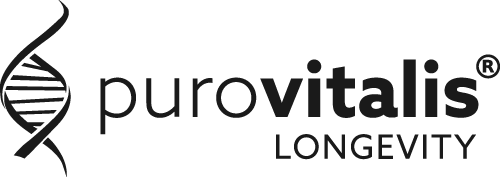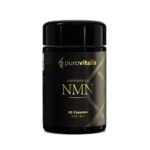
Indholdsfortegnelse
Hvis du interesserer dig for energi, restitution eller sund aldring, vil du hurtigt møde NAD+. Cellerne bruger det til at omdanne mad til ATP, reparere DNA og køre stressresponsenzymer. Niveauerne falder med alderen, og det er derfor, der er så stor opmærksomhed på at øge NAD+. En gennemgang af Nature Aging fra 2025 samler, hvad vi ved fra forsøg på mennesker, og hvor de enkelte forstadier passer ind.
Stierne på et minut
Din krop fremstiller NAD+ ad tre veje:
- Salvage (hovedvej i de fleste væv): recirkulerer nikotinamid (NAM) tilbage til NAD+ via NAMPT. NR → NMN → NAD+; NMN → NAD+.
- Preiss-Handler: bruger niacin (NA).
- De novo: starter fra tryptofan gennem kynureninvejen og konvergerer senere; langsom og tæt reguleret
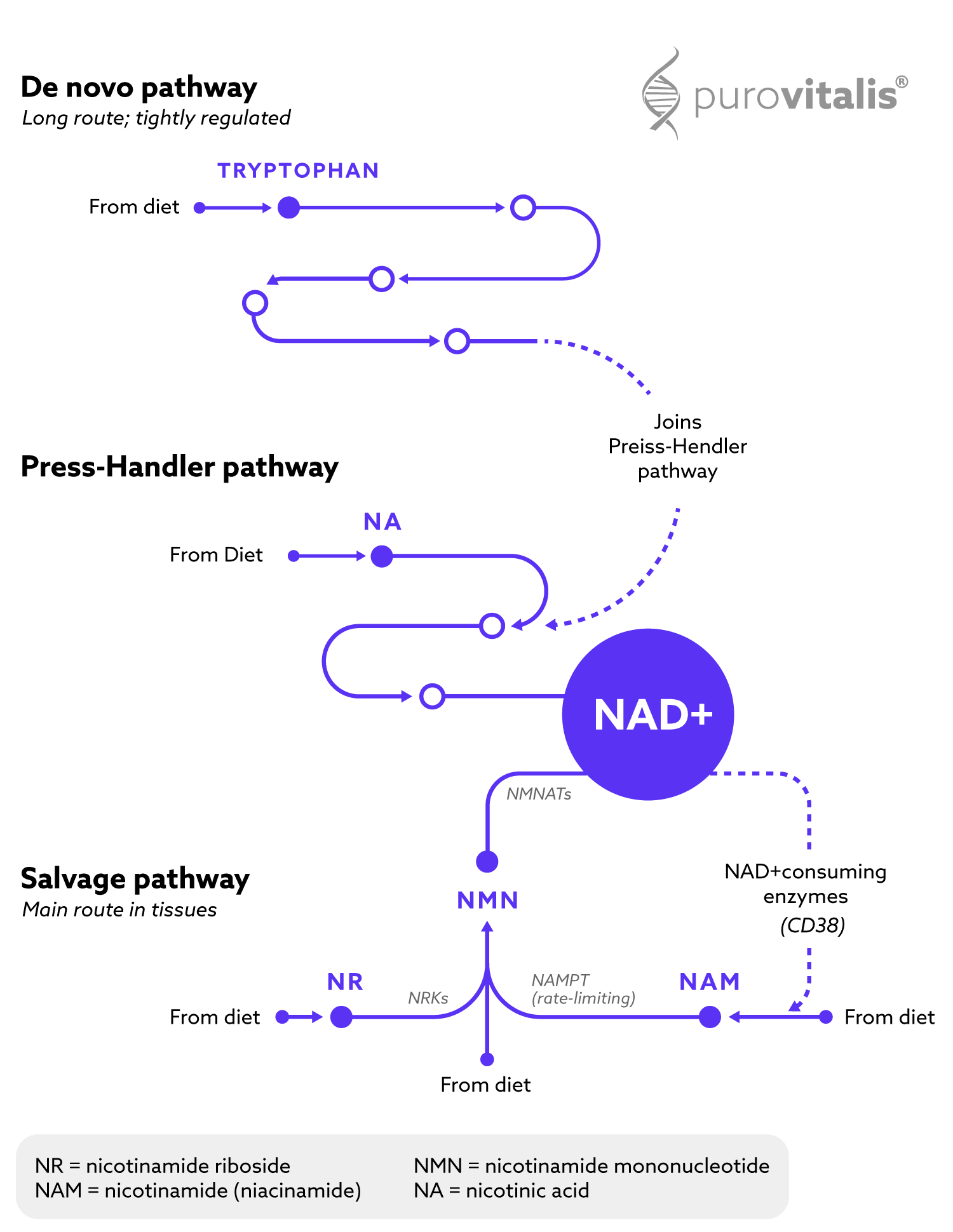
Få mere at vide: Hvad er NAD+, og hvorfor er det vigtigt for aldring?
Et hurtigt overblik: Sammenligning af NAD+-forstadier
| Forløber | Hvordan det fodrer NAD+ | Menneskelige beviser | Effektivitet | Vigtige positive ting | Opmærksomhedspunkter / noter |
|---|---|---|---|---|---|
| Nikotinamid-ribosid (NR) | Redning → NMN → NAD+. | Flere forsøg på mennesker; stærke stigninger i NAD+ i blod/hjerne | Høj | Gode data fra mennesker; veltolereret | Nogle resultater er blandede; hold dig til de undersøgte doser |
| Nikotinamid-mononukleotid (NMN) | Redning → NAD+. | Placebokontrollerede forsøg; øger NAD+; tidlige funktionelle fordele | Høj | Opmuntrende RCT-resultater; sikker i forsøg | Kvalitet er vigtig; begrænsede langtidsdata |
| Nikotinamid (NAM) | Redning via NAMPT → NMN → NAD+. | Øger NAD+; vitamin B3-form | Moderat | Prisbillig; bredt tilgængelig | Høje doser kan sløve sirtuiner |
| Nikotinsyre (NA) | Preiss-Handler → NAD+ | Øger NAD+; klinisk brug af lipider | Moderat | Lang historie; effektiv | Flushing almindelig ved typiske doser |
| NRH | Reduceret NR → hurtig adgang | Ingen forsøg på mennesker; stærke prækliniske resultater | Potentielt mere potent | Store stigninger i NAD+ hos dyr | Inflammatoriske signaler in vitro; sikkerhed ukendt |
| NMNH | Reduceret NMN → NAD+/NADH | Ingen data fra mennesker; prækliniske boosts | Potentielt mere potent | Højere boost i tidlige modeller | Uklarhed om stabilitet og sikkerhed |
| Tryptofan | De novo → NAD+. | Mindre bidrag; ikke effektiv i væv | Lav | Aminosyre i kosten | Langsom, reguleret; ikke praktisk til boosting |
| Forløber | Bevismateriale | Effektivitet |
|---|---|---|
| NR Redning → NMN → NAD+ | Flere forsøg på mennesker; stærke stigninger i NAD+ i blod/hjerne | Høj |
| NMN Genopretning → NAD+ | RCT'er; øger NAD+; tidlige funktionelle fordele | Høj |
| NAM Vitamin B3 | Øger NAD+; høje doser kan sløve sirtuiner | Moderat |
| NA Vitamin B3 | Øger NAD+; effektiv, men udvaskende | Moderat |
| NRH Reduceret NR | Kun præklinisk; store boosts | Potentielt mere potent |
| NMNH Reduceret NMN | Kun præklinisk; stærkere end NMN | Potentielt mere potent |
| Tryptofan De novo vej | Mindre bidrag hos mennesker | Lav |
Bemærk:
I Nature Aging-gennemgangen fremhæves NR og NMN som de mest undersøgte hos mennesker. NA og NAM er etablerede vitaminer. NRH og NMNH er på vej frem med stærke prækliniske signaler, men begrænsede data fra mennesker.
Sikkerhed og fremtidig retning
Et vigtigt spørgsmål er: Er NAD+-boostere sikre, især ved langtidsbrug? Indtil videre tegner tidlige forsøg et beroligende billede. Både NR og NMN har vist gode sikkerhedsprofiler i studier på mennesker. For eksempel rapporterer flere studier, at daglige doser på 1.000 mg eller mere af NR tolereres godt uden alvorlige bivirkninger . På samme måde viste et klinisk forsøg med NMN i en dosis på 1.250 mg om dagen i 4 uger, at det var sikkert og ikke forårsagede nogen væsentlige bivirkninger hos raske mænd og kvinder . Deltagere, der tager disse kosttilskud, oplever generelt, at NAD+-niveauerne stiger med minimale bivirkninger - nogle mennesker rapporterer højst om milde symptomer som kvalme eller træthed, men de er sjældne.
Når det er sagt, advarer eksperter om, at vi stadig har brug for mere forskning, før NAD+-boostere kan betragtes som dokumenterede anti-aging-terapier. De fleste forsøg på mennesker har indtil videre været korte (et par uger til måneder) og i relativt små grupper. Det er stadig uvist, hvad der sker med et kontinuerligt, langvarigt NAD+-tilskud over flere år. Vil fordelene holde eller vokse? Er der nogen skjulte risici ved at holde NAD+ kronisk forhøjet? Store og længerevarende undersøgelser er i øjeblikket i gang for at besvare disse spørgsmål.
Et andet igangværende forskningsområde er at identificere den optimale dosering og timing for NAD+-boostere. Fremtidige undersøgelser kan vise, at visse grupper af mennesker (baseret på alder, genetik eller sundhedstilstand) reagerer bedre end andre. Forskerne er også i gang med at udforske nye NAD+-boostende molekyler og forbedrede leveringsmetoder. For eksempel kan CD38-hæmmere (for at reducere nedbrydningen af NAD+) eller nye forstadier (undertiden kaldet "andengenerations" NAD+-boostere) arbejde sammen med NR eller NMN for at opnå en endnu større effekt. Formuleringer som liposomale NAD+-prækursorer eller kapsler med vedvarende frigivelse er under udvikling for at øge biotilgængeligheden, hvilket betyder, at mere NAD+ kommer ind i cellerne, hvor der er brug for det.
De 7 NAD+-forstadier forklaret
1. Nikotinamid-ribosid (NR)
NR er en form for B3-vitamin, som findes naturligt i spormængder i mælk. NR omdannes til NMN og derefter til NAD+ i den såkaldte salvage pathway.
Beviser fra mennesker: Flere kliniske forsøg viser, at NR kan øge NAD+ i blod og muskler betydeligt. I nogle studier blev NAD+ næsten fordoblet i forhold til baseline. NR er blevet testet op til 2.000 mg/dag og tolereres generelt godt.
Effektivitet: Høj.
Få mere at vide: Hvad er NR?
2. Nikotinamid-mononukleotid (NMN)
NMN er et skridt væk fra NAD+, hvilket gør det til en direkte forløber i genvindingsvejen.
Beviser fra mennesker: Placebokontrollerede forsøg har vist, at NMN øger NAD+ i blodet. Nogle studier rapporterer om forbedret insulinfølsomhed hos kvinder med prædiabetes og bedre ganghastighed hos ældre mænd. Sikkerhedsdata ser lovende ud op til 1.200 mg/dag.
Effektivitet: Høj
Læs mere: Hvad er NMN?
3. Nikotinamid (NAM)
NAM, også kendt som niacinamid, er den standardform af B3-vitamin, der findes i mange multivitaminer. Det genbruges til NAD+ via enzymet NAMPT.
Beviser fra mennesker: NAM øger NAD+-niveauet, men meget høje doser kan blokere sirtuiner - enzymer, der er forbundet med longevity.
Effektivitet: Moderat.
4. Nikotinsyre (NA, niacin)
NA er en anden form for B3-vitamin. Det bidrager til NAD+-produktionen gennem Preiss-Handler-vejen.
Beviser fra mennesker: NA øger NAD+, men forårsager ofte rødmen ved almindelige doser. Det er også blevet brugt i årtier i høje doser til lipidstyring under lægeligt tilsyn.
Effektivitet: Moderat.
5. NRH (dihydronicotinamid-ribosid)
NRH er den reducerede form af NR og kommer hurtigt ind i NAD+-puljen.
Evidens på mennesker: Ingen offentliggjorte forsøg endnu. I celler og dyremodeller øger NRH NAD+ mere end NR. Nogle studier viser dog, at det kan udløse inflammatorisk genaktivitet i immunceller.
Effektivitet: Potentielt mere potent end NR, men ikke bevist i mennesker.
6. NMNH (reduceret NMN)
NMNH er den reducerede form af NMN. Det kan indgå i både NAD+- og NADH-puljer.
Menneskelige beviser: Ingen indtil videre. Tidligt præklinisk arbejde tyder på, at det kan være endnu mere effektivt end NMN til at hæve NAD+ i væv. Stabilitet og sikkerhed hos mennesker er fortsat uklar.
Effektivitet: Potentielt mere potent end NMN, men ikke bevist i mennesker.
7. Tryptofan
Tryptofan er en essentiel aminosyre, der findes i kostprotein. Den understøtter produktionen af NAD+ gennem den lange de novo-vej (kynurenin).
Menneskelig evidens: Tryptofan bidrager til NAD+ i leveren, men denne vej er langsom og stramt reguleret, så tilskud øger ikke NAD+ meningsfuldt i de fleste væv.
Effektivitet: Lav.
Kendetegn ved aldring: hvor NAD+ passer ind
NAD+ berører flere kendetegn: DNA-reparation (PARP'er), epigenetisk regulering og mitokondriefunktion(sirtuiner) og inflammation/senescens. CD38 stiger med alderen og nedbryder NAD+ (og kan metabolisere NMN), hvilket er med til at forklare den aldersrelaterede nedgang. Bevarelse eller genoprettelse af NAD+ understøtter disse vedligeholdelsessystemer.
Få mere at vide om aldringens kendetegn
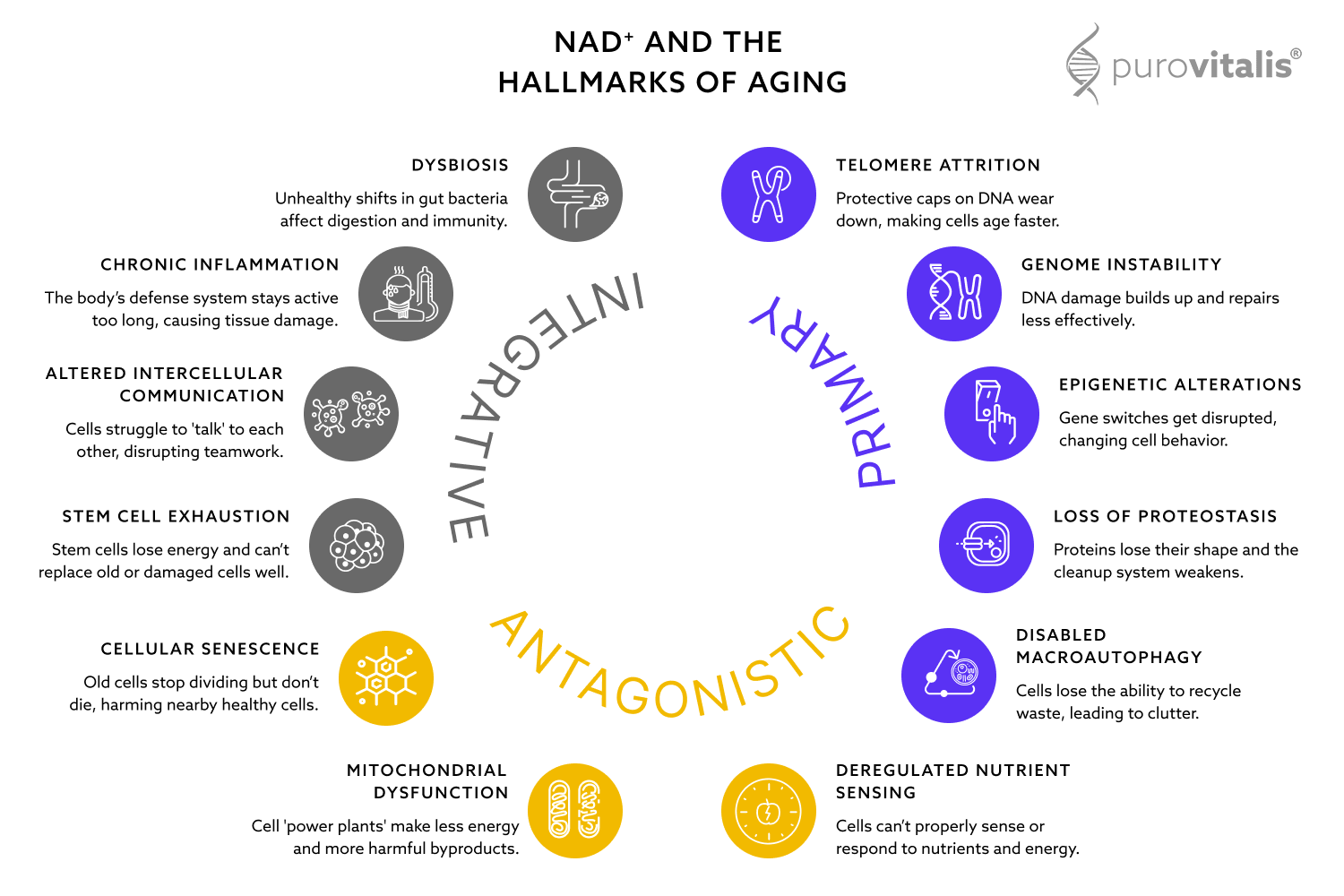
En note om CD38:
CD38 er et enzym, der nedbryder NAD+ og endda forbruger NMN. Dets aktivitet stiger med alderen og inflammation, hvilket fremskynder nedgangen i NAD+. I dyreforsøg har blokering af CD38 bevaret NAD+ og forbedret sundhedsmarkørerne. Der forskes stadig i CD38-hæmmere til mennesker, men dette enzym er en vigtig grund til, at forstadier som NR og NMN undersøges hos ældre voksne.
Købsvejledning (hurtig og praktisk)
De fleste læsere spørger: "Hvilken skal jeg prøve?" Baseret på menneskelige data i dag:
- Start med NR eller NMN. Begge øger NAD+ pålideligt hos mennesker; vælg det format, du foretrækker, og vær konsekvent i 8-12 uger.
- Niacin (NA) virker, men forvent rødmen; tal med en læge, hvis du har lipid- eller glukoseproblemer.
- NAM er fint ved typiske vitamindoser. Undgå meget høje kroniske doser, hvis dit mål er sirtuin-relaterede fordele.
- NRH og NMNH ser stærke ud i laboratoriet, men er ikke klar til rutinemæssig brug uden data fra mennesker.
Vores tip:
Er du ikke sikker på, hvilken nad+-forløber der passer til dig? Prøv en måned side om side: Purovitalis NMN den ene måned, NAD Booster (NR + NAM) den næste måned. Hold øje med søvn, eftermiddagsenergi, træningsrestitution og andre bærbare målinger. Folk reagerer forskelligt; et kort selvforsøg er den nemmeste måde at se, hvad der virker for dig.
Konklusion og næste skridt
At øge NAD+ er en praktisk måde at støtte cellulær energi, reparation og modstandskraft på, når vi bliver ældre. NR og NMN skiller sig ud i dag med hensyn til data fra mennesker; vitaminerne NA og NAM hjælper med nogle afvejninger; NRH/NMNH er lovende, men har brug for forsøg. Brug tabellen til at vælge et udgangspunkt, og test og følg op.
For sundhedsbevidste personer kan opretholdelse af NAD+-niveauer blive en del af en proaktiv wellness-strategi. Enkle skridt som regelmæssig motion og en afbalanceret kostkan understøtte NAD+-metabolismen (motion øger f.eks. det NAD+-producerende enzym NAMPT). Dertil kommer, at der findes kosttilskud med NAD+-forstadier til dem, der ønsker at prøve dette biohack for at få ekstra støtte.
Vil du vide mere om NMN og NR? Læs vores omfattende sammenligning.
Hvilken NAD+-forløber har flest menneskelige data?
NR og NMN. Begge øger NAD+ i blodet i randomiserede forsøg på mennesker.
Hvor hurtigt stiger niveauerne?
I NR-studier steg NAD+ i blodet inden for 1-2 uger og forblev forhøjet under tilskuddet.
Er NMN's effekt vist i mennesker?
Ja, det er det. Et 10-ugers RCT hos postmenopausale kvinder med prædiabetes rapporterede højere NAD+ og forbedret insulinfølsomhed i musklerne.
Øger tryptofan NAD+ på en meningsfuld måde?
Ikke i praktisk forstand for raske mennesker; de novo-ruten er langsom og stramt reguleret.
Er høje doser af NAM en god idé?
NAM øger NAD+, men meget høje kroniske doser kan modvirke sirtuin-aktiviteten; hold dig til standard vitaminintervaller, medmindre andet anbefales.
Hvad med NRH og NMNH?
Prækliniske data ser stærke ud, men der er ikke offentliggjort effekt på mennesker lige nu. Behandl dem som "nye".
Er det sikkert at hæve NAD+?
Tidlige forsøg med NR og NMN på mennesker rapporterer om god tolerance ved almindeligt undersøgte doser; langtidsresultater kræver stadig større undersøgelser.
Referencer
- Zhang, J., Wang, HL., Lautrup, S. David Sinclair et al. Emerging strategies, applications and challenges of targeting NAD+ in the clinic. Nat Aging 5, 1704-1731 (2025). https://doi.org/10.1038/s43587-025-00947-6
- Brage Brakedal, Christian Dölle, Frank Riemer, Yilong Ma, Gonzalo S. Nido, Geir Olve Skeie, Alexander R. Craven, Thomas Schwarzlmüller, Njål Brekke, Joseph Diab, Lars Sverkeli, Vivian Skjeie, Kristin Varhaug, Ole-Bjørn Tysnes, Shichun Peng, Kristoffer Haugarvoll, Mathias Ziegler, Renate Grüner, David Eidelberg, Charalampos Tzoulis, study: A randomized phase I trial of nicotinamide riboside supplementation in Parkinson's disease, Cell Metabolism,https://doi.org/10.1016/j.cmet.2022.02.001.
- Yi L, Maier AB, Tao R, Lin Z, Vaidya A, Pendse S, Thasma S, Andhalkar N, Avhad G, Kumbhar V. Effekten og sikkerheden ved tilskud af β-nikotinamidmononukleotid (NMN) hos raske midaldrende voksne: et randomiseret, multicenter, dobbeltblindt, placebokontrolleret, parallelgruppe, dosisafhængigt klinisk forsøg. GeroScience. 2022 Dec 8;45(1):29-43. doi:10.1007/s11357-022-00705-1. PMID: 36482258; PMCID: PMC9735188.
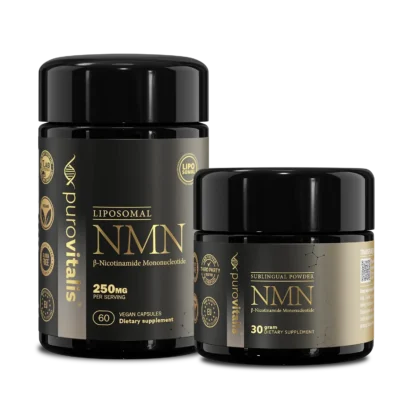
NMN-tilskud Europæisk baseret Liposomal levering
Vores NMN-tilskud er her for at hjælpe dig med at stråle og føle dig bedst mulig! Prøv det nu!
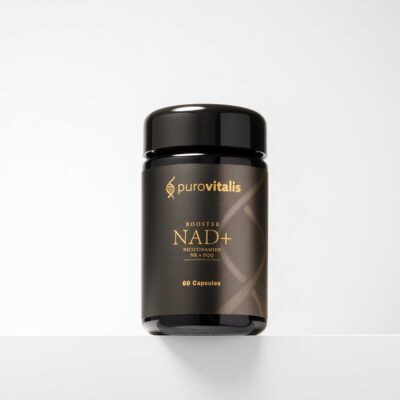
Boost dine NAD-niveauer nu
Oplev vores førsteklasses NAD+ booster , og styrk din vitalitet.


